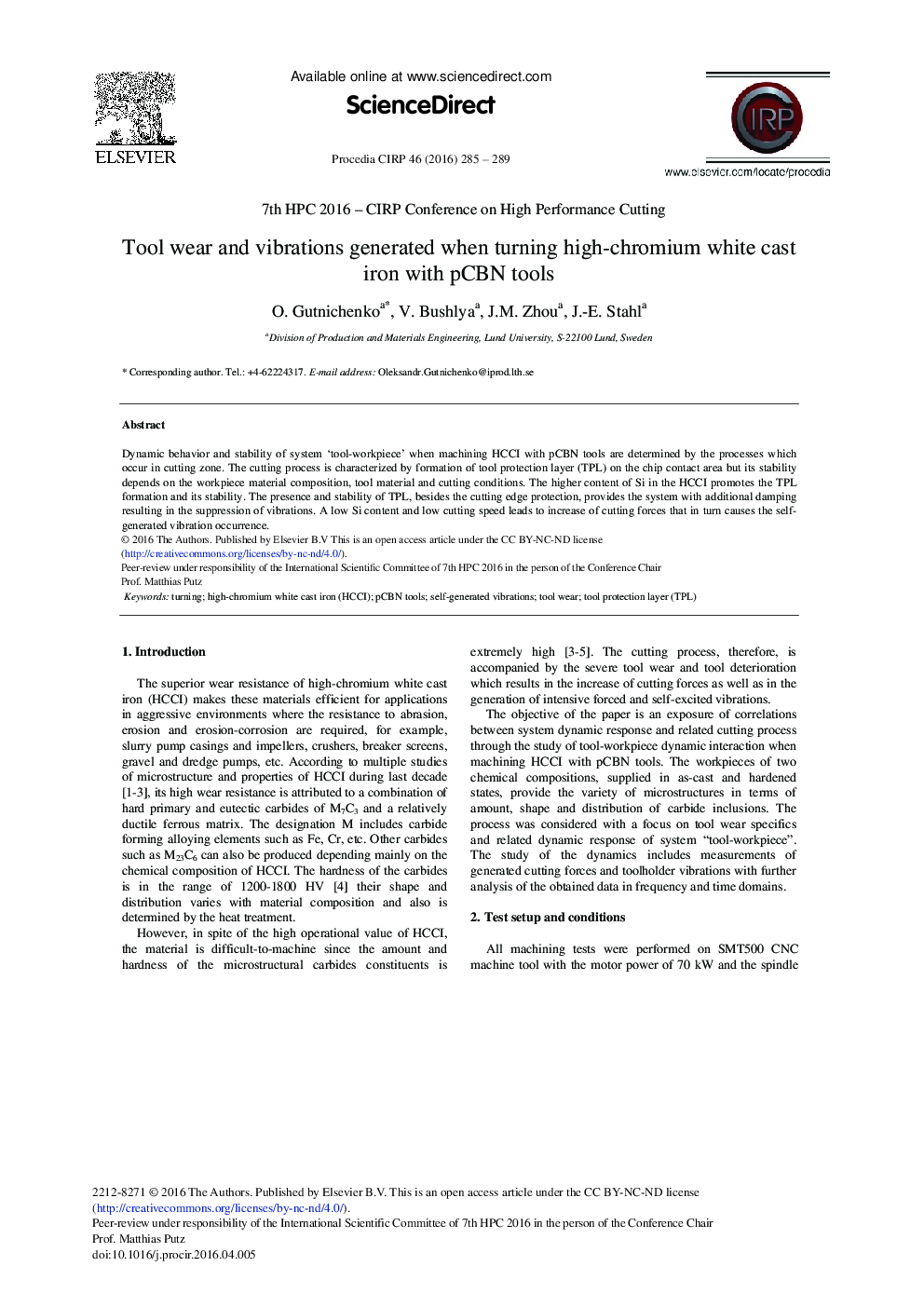| Article ID | Journal | Published Year | Pages | File Type |
|---|---|---|---|---|
| 1698425 | Procedia CIRP | 2016 | 5 Pages |
Abstract
Dynamic behavior and stability of system ‘tool-workpiece’ when machining HCCI with pCBN tools are determined by the processes which occur in cutting zone. The cutting process is characterized by formation of tool protection layer (TPL) on the chip contact area but its stability depends on the workpiece material composition, tool material and cutting conditions. The higher content of Si in the HCCI promotes the TPL formation and its stability. The presence and stability of TPL, besides the cutting edge protection, provides the system with additional damping resulting in the suppression of vibrations. A low Si content and low cutting speed leads to increase of cutting forces that in turn causes the self-generated vibration occurrence.
Keywords
Related Topics
Physical Sciences and Engineering
Engineering
Industrial and Manufacturing Engineering
Authors
O. Gutnichenko, V. Bushlya, J.M. Zhou, J.-E. Stahl,
